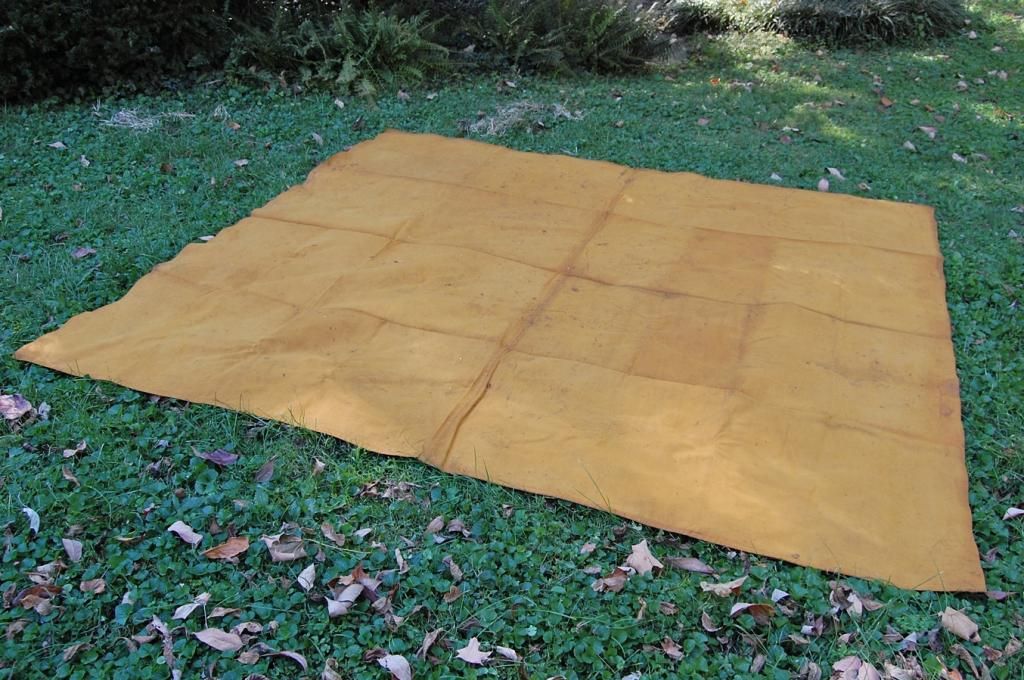OK, OK, I'll play! :haha:
I hadn't responded because what I did may not be anything like what you are thinking about. I made my own tarp/groundcloth according to what were purported to be period directions, but I can't swear to that. I don't know what you mean by 'oil cloth', but I made that, too. I bought some light canvas material, lightest I could find. It came in 4-foot width, so I bought 16 feet of it, cut it in half so I had two pieces 4' X 8'. The material had a selvedge along both long sides, so I didn't have to do anything with that to keep it from raveling. I sewed the two pieces side by side so I had a tarp 8' x 8', used what is called a flat-felled seam. Two sides had that selvedge, but the other two had been cut, so they had to be hemmed, did that with a standard hem fold and stitch. I put no loops or ties.
The end product was 8' x 8' with a seam down the middle. Since most period looms were not wider than 4 feet, I believe larger projects like blankets were commonly made of two strips sewn together.
Once it was sewn together I treated it with boiled linseed oil and iron oxide to waterproof it. It turned out well, worked well, and I used it as a ground cloth for quite some time. I usually didn't bother to hang it as a shelter, just spread it out, spread a blanket on top, lay down and folded both over me. Spent quite a few rainy nights that way, it was noisy, but kept me and all my gear dry.
I never had any complaints about it except the weight, and I stopped lugging it around several years ago. Don't sleep out much, any more, so it's not a problem. I made it more than 20 years ago and it's still in good shape, cloth is strong. Here's a recent picture.

Spence





